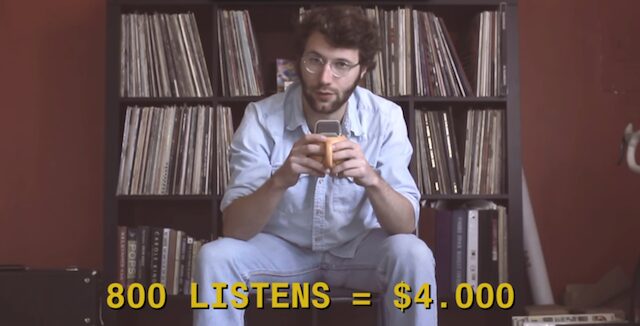Cluster explores the new senses that cluster around musical currents of the past and present, their aesthetics and practices. Like the dissonant chord from which it takes its name, Cluster will highlight contrasts and chords in the relationship between sound and the communities built around it.
This story of a silent album generating a tidy profit seemed like nothing more than an urban legend – and it didn’t take me long to uncover the proverbial grain of truth behind it.
In 2014, the band Vulfpeck released their debut album, Sleepify. The album consisted of 10 tracks, each lasting either 31 or 32 seconds, all completely silent. The invitation to their fans was crystal clear: “Play it on repeat all night long. With the proceeds, we’ll organise a completely free tour.”
And the tour happened. Needless to say, Spotify didn’t take kindly to this glitch in the matrix. In fact, as early as 2014, the platform took steps to ensure no one else could pull a similar stunt, removing the album but still paying the band what they were due – $20,000.
When people say that silence speaks louder than words, they do so for good reason.

A similar sentiment is shared by over a thousand artists from the United Kingdom, who have joined forces to protest against their government’s plan to allow artificial intelligence companies unrestricted access to copyrighted material. Among them are Kate Bush and Damon Albarn, who, under the collective name 1000 UK artists, have released an album entitled Is This What We Want?, made up entirely of tracks featuring the ambient noise of empty theatres and dormant recording studios.
That silence, according to those promoting the initiative, represents a future in which no regulation exists on the use of AI in music and the arts.
Even this idea of capturing the soundscape of places dedicated to music is not entirely original. There’s a notable precedent: in 1952, John Cage composed 4’33”, a piece in three movements lasting exactly 4 minutes and 33 seconds, during which the instrument plays not a single note.
With this, Cage revealed the world of soundscapes: the creaking of chairs, a cough, becoming part of the performance itself.
They say “A beautiful silence was never written.” Beautiful? Who knows. But certainly, many significant ones have been.
Vulfpeck – Sleepify
1000 UK Artists – Music
John Cage – 4’33” performed by the Berliner Philharmoniker
Pierluigi Fantozzi, 1995, is a musician. He graduated from the National Academy of Jazz in Siena and obtained his master’s degree at the Conservatory of Bologna. A clarinet player, he has played in jazz ensembles, but has cultivated an interest in electronic music, also collaborating with Tempo Reale. Since 2023, he has been part of the Controradio team, for which he has conducted interviews with important figures on the international music scene. As a radio speaker, he leads his own programme ‘Passabanda’.